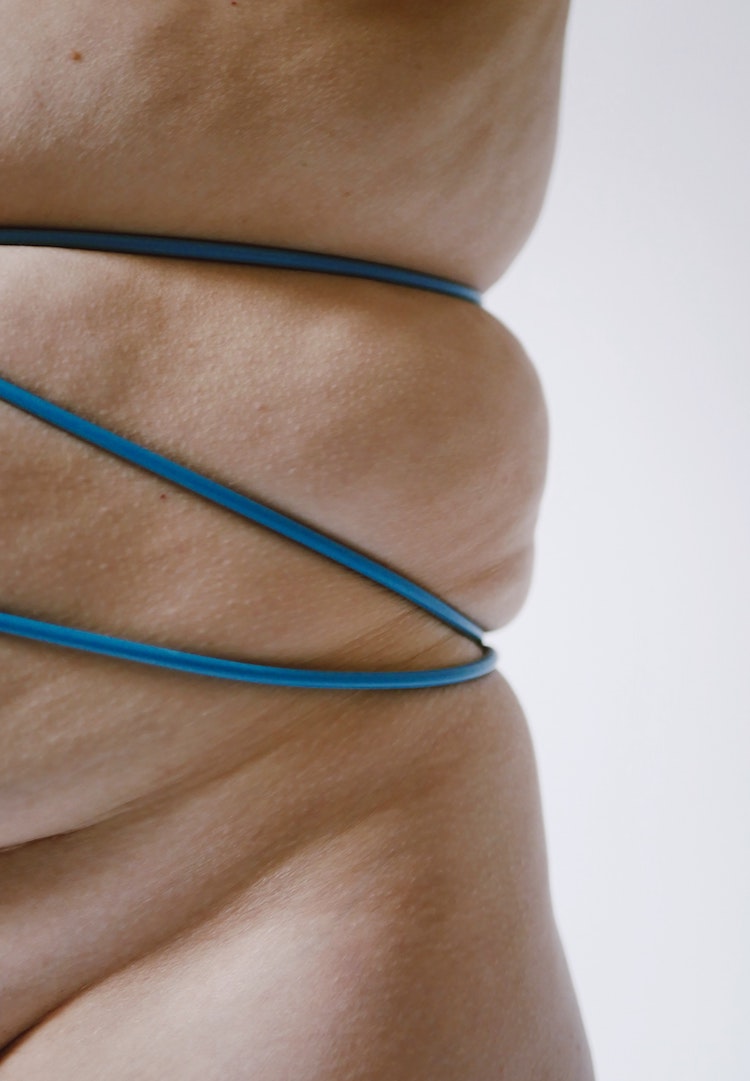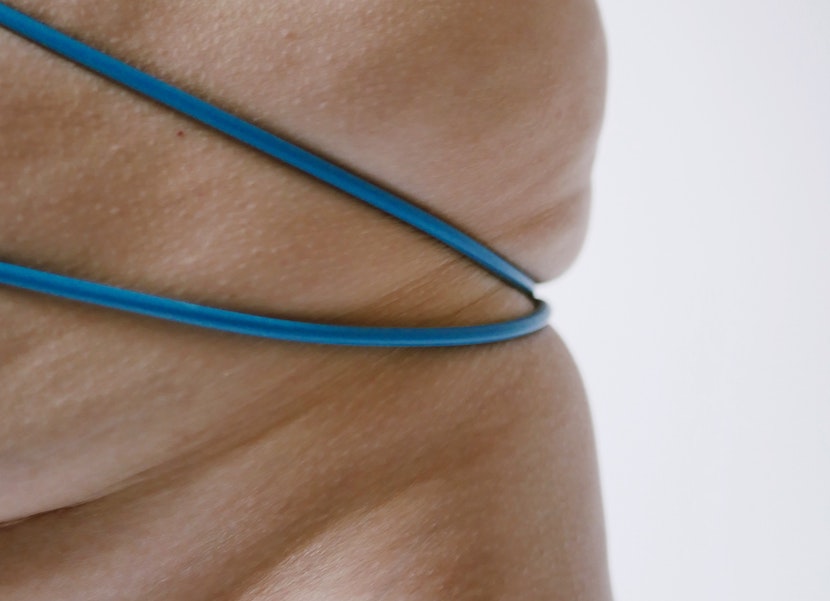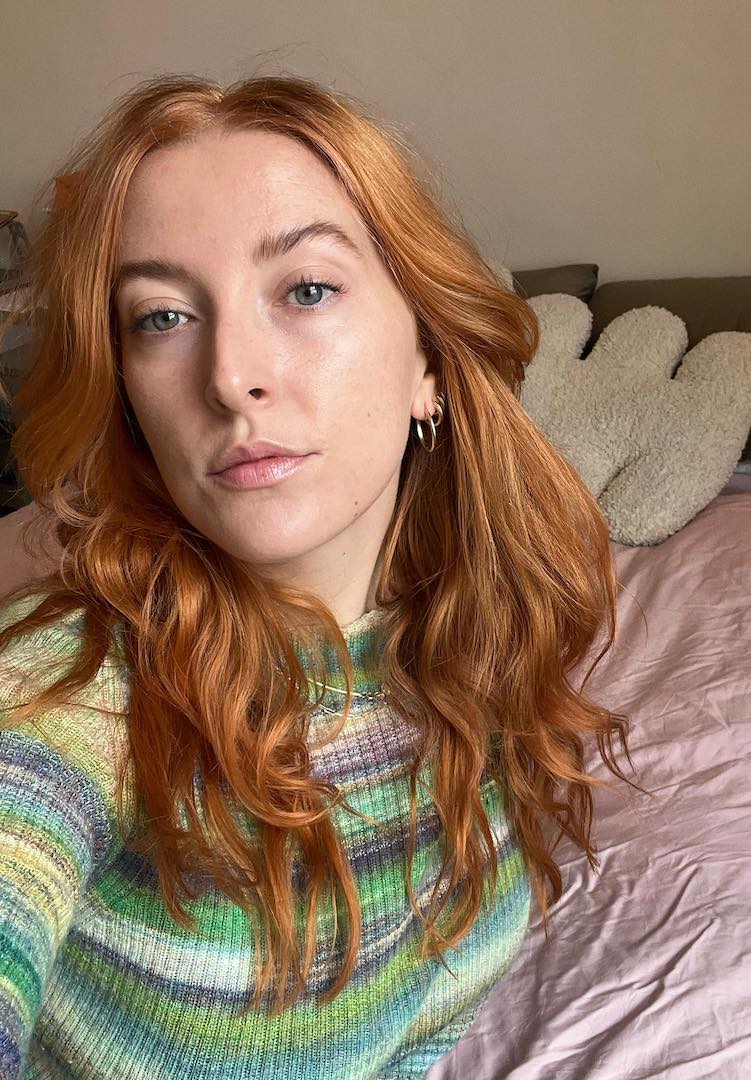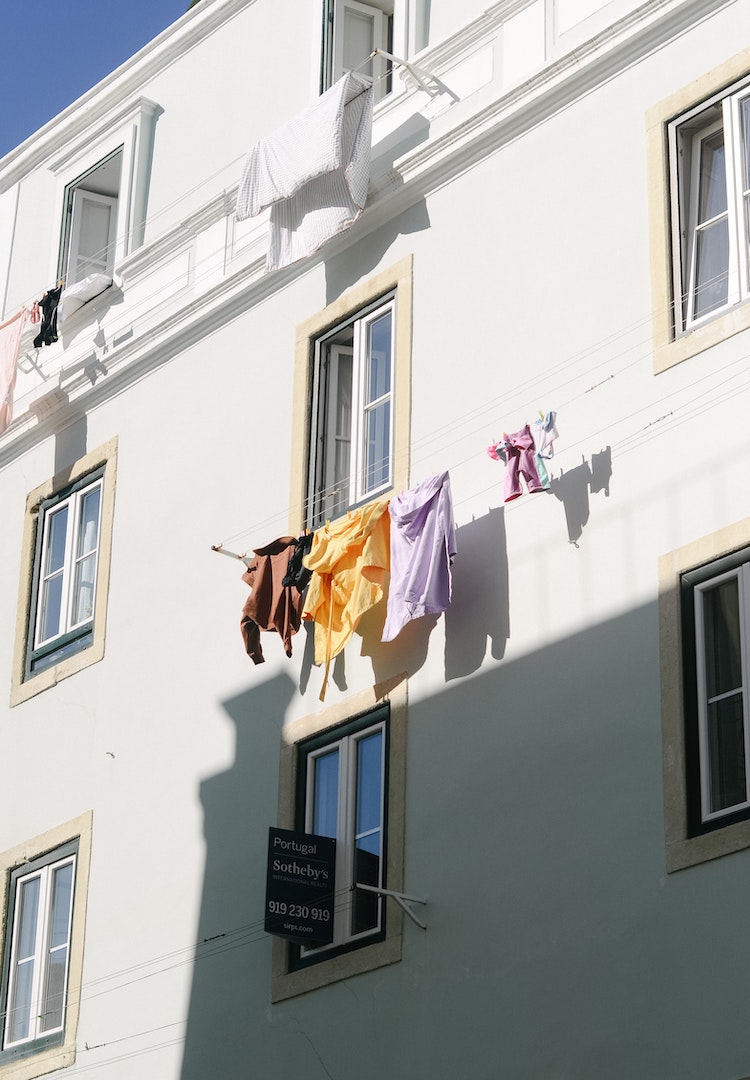What is lipoedema? Everything you need to know about this misunderstood disease
WORDS BY MAEVE KERR-CROWLEY
Getting the skinny on ‘the disease called fat’.
It’s an unfortunate fact that women’s health issues are often overlooked, discredited and misdiagnosed. Women (and other people with vaginas) spend years seeking relief from conditions like endometriosis and PCOS, fighting against the idea that extreme menstrual pain and suffering are just a fact of life for 50 per cent of the world’s population.
Medical fatphobia is another prolific problem in the health industry – a widespread bias against fat people that sees even doctors unable to take their health concerns seriously.
For more content like this, tap through to our Life section.
Often, doctors will tell a fat patient to lose weight before listening to their symptoms or considering a diagnosis. Patients are blamed for their own poor health, burdened by the fatphobic perception that being fat is the worst thing that could possibly happen to you.
Lipoedema is a condition that lives at the intersection of these two biases, making it even more likely to be misdiagnosed or ignored.
What is lipoedema?
Almost exclusively affecting women, lipoedema is characterised by the growth of diseased fat in the legs, hips and sometimes arms.
It presents as disproportionately large legs, often mistaken for regular old fat and therefore seen as a personal failure that can be fixed with rigorous dieting, exercise or weight loss surgery.
One in 10 women is affected by lipoedema. It’s a chronic condition that causes pain, discomfort, reduced mobility and an increased chance of other problems like lymphedema.
While it was officially recognised by the World Health Organisation in 2019, it’s not yet recognised by the Australian Government or Medicare and surgical treatment is still considered cosmetic, rather than medical.
Lipoedema Surgical Solution (LSS) is a leading force in lipoedema education and management, working to raise awareness of the condition and help more women arrive at an accurate diagnosis. The clinic is headed by Dr Chris Lekich, who has over two decades of experience as a phlebologist (read: vein doctor).
For Lipoedema Awareness Month, LSS has released a photo shoot highlighting 10 Australian women diagnosed with the condition. The shoot also includes two mother and daughter pairs, reflecting the genetic nature of lipoedema as it’s passed through generations of women.
“It’s very common for us to have three generations of women in one consultation, from daughter to mother to grandma, that are affected by this disease,” Dr Lekich explains. “Characteristically, these women are seen as obese or fat. So it’s a disease called fat, but in actual fact, it’s not.”
How do I know if I have lipoedema?
The difference between regular fat and lipoedema is the diseased, painful nature of the fat itself. Women with lipoedema describe aches, throbbing, easy bruising and tenderness through their legs, often making them unable to withstand the pressure of a massage or someone sitting on their lap.
The condition typically develops when your body is going through significant hormonal changes. For most people, it starts during puberty, but it can also be triggered by childbirth, auto-immune conditions and menopause.
Dr Lekich lists the three biggest signs of lipoedema as that aforementioned pain, the disproportionate growth of fat – you might, for example, be multiple clothing sizes larger on the bottom than the top – and the fact that the weight can’t be shed through dieting or exercise.
That last point is the one that causes some of the most damage, a lot of which is avoidable with adequate medical care and compassion. Assuming or being told that they’re “just overweight” but being unable to do anything about it can lead to psychological issues of low self-esteem, depression and eating disorders as people grow to believe they’re just not working hard enough to lose the weight.
Dr Lekich describes how validating a diagnosis can be for patients – how many women cry when they’re finally given an answer and told that their pain isn’t their fault.
“[The photo shoot] is really an awareness campaign. The more people that know about lipoedema, the more patients we have being diagnosed,” he says. “Early diagnosis really puts that missing piece of the puzzle in place. Once they know it’s a disease, they’re not doing fad diets and not starving themselves. Because all those things don’t work.”
Once I have a diagnosis, how do I treat it?
Lipoedema can’t be ‘cured’, so to speak, but it can be managed with the right medical care. There are multiple methods of conservative management, including compressive garments, manual lymphatic drainage and a lipoedema-friendly, anti-inflammatory diet.
The other option for those who want the fat completely gone is surgery. LSS is one of the top Australian clinics specialising in a specific surgical procedure, perfected over 14 years to remove all traces of diseased fat so it can’t grow back.
Dr Lekich was personally trained in the procedure by the world’s leading lipoedema surgeon, Dr Heck of Germany’s LipoClinic. It’s an expensive procedure that’s not covered by Medicare, making it unviable for a lot of patients, but Dr Lekich notes that it can be completely life-changing for people who have it.
Why have I never heard of lipoedema?
Because it’s often mistaken for typical fat, many people have never heard of lipoedema, let alone considered they themselves might have it. According to Dr Lekich, even a lot of physicians and specialists aren’t familiar with the condition.
The goal of Lipoedema Awareness Month and LSS’ photo shoot campaign is to change this. “The goal of the photo shoot was to show these women in all their beautiful glory,” says Dr Lekich.
“These are women who are particularly brave, who perhaps have never wanted to show their legs, and have come out of their comfort zones to do this. A lot of these women have had a very long journey with the disease where it’s burdened them physically and psychologically. So they’re stepping up and saying, ‘Hey, you labelled me as fat, but this is a disease.’”
A Q&A with the photoshoot participants delves into these journeys, reflecting common themes of relief, self-acceptance and support for others with the same condition. Some women explain that if they’d been diagnosed with the disease earlier, they might have been able to live their lives very differently.
Multiple participants tell of learning about the disease when a relative was diagnosed, unlocking a family mystery and changing the lives of multiple generations.
Each story supports the point that Dr Lekich and LSS are so passionate about – awareness, understanding and early diagnosis are the most important steps in treating this disease.
For more on lipoedema, try this.













